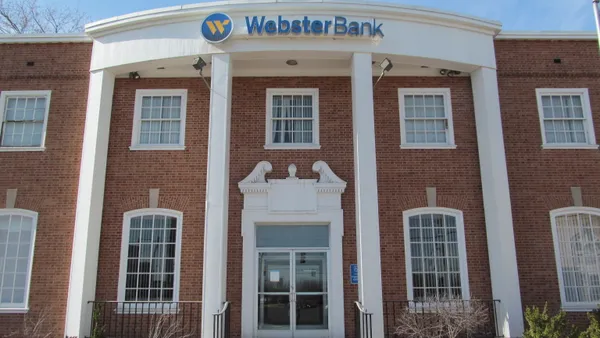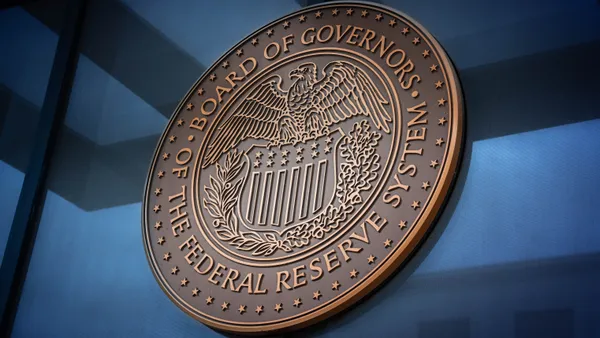Dive Brief:
-
Truist reported profit of $986 million for the quarter ending March 31, an increase of 31.6% compared with $749 million it reported as BB&T last year, according to the bank's earnings release.
-
The Charlotte, North Carolina-based bank, formed after the merger of BB&T and SunTrust in December, also set aside $893 million for credit losses related to the coronavirus pandemic, as well as a switch to the current expected credit loss (CECL) accounting standard.
-
The bank cut 800 positions early in the quarter, which it attributed, in an earnings presentation, to the merger.
Dive Insight:
Like its peers JPMorgan Chase, Bank of America, Citi and Wells Fargo, Truist is boosting its reserves as it braces for the impact the coronavirus pandemic will have on its loans.
But, in a statement Monday, Chairman and CEO Kelly King remained positive. "The combination of our two heritage companies positions Truist well to support our clients, communities and teammates in this challenging environment," he said. "As a well-capitalized institution with a strong liquidity position, we have seen significant growth in loans as our commercial clients drew down their lines of credit and have also seen a flight to quality as many of our clients move funds out of the financial markets and into deposit accounts."
The crisis could affect the timeline of the bank’s $1.6 billion post-merger cost-savings goal, which it had planned to hit by the end of 2022.
"We still remain very confident in terms of our $1.6 billion in net cost savings," King told analysts during a call Monday. "Exactly when we achieve that depends on, obviously, the environment we're living in."
The bank already extended its timeline for the goal in January, citing systems integrations and branch consolidation delays.
As the economy reels from the impacts of social distancing, King said a V-shaped recovery would put the bank on target for its cost savings goal, while a U-shape would lengthen that timeline.
"Regardless, we believe that we will be a top-tier performer, whatever the absolute numbers are," King said. "The benefits of the merger look better now than they did a year ago."
As companies implement social distancing measures amid the pandemic, King said 90% of Truist’s branches are equipped with drive-throughs, which have remained open during the pandemic.
The bank has also authorized Paycheck Protection Program (PPP) loans for 32,000 companies, representing about 1 million employees, King said. The bank’s average PPP loan amount is $323,000, and it expects to fund more than $10 billion for the program’s first round.
Truist said it provided $65 million in coronavirus-related bonuses to employees making under $100,000 a year during the quarter.
The Federal Reserve and the Federal Deposit Insurance Corp. (FDIC) approved BB&T's $28 billion acquisition of SunTrust in November, allowing the two banks to form Truist, the country’s sixth-largest bank.
The regulatory agencies approved the merger on the condition that the banks divest 30 branches and more than $2.4 billion in deposits to mitigate the competitive effects of the deal.
The deal is the largest bank merger since the 2007-08 financial crisis.













